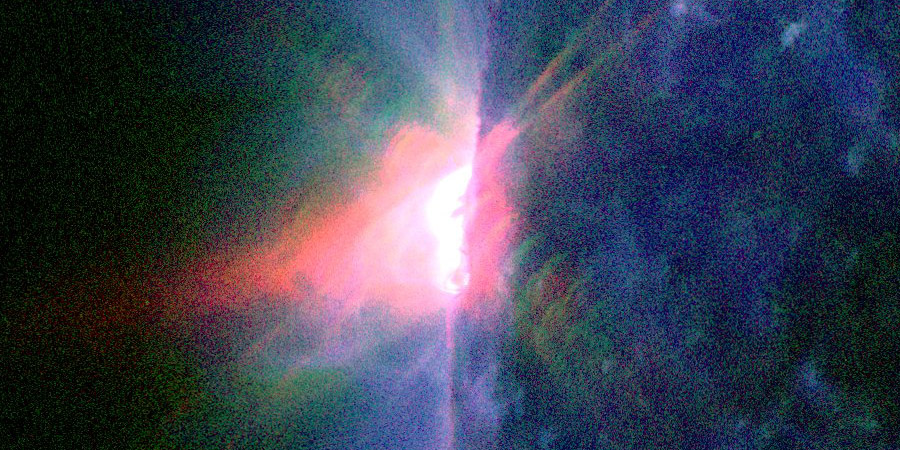M1.2 solar flare, C7.0 solar flare
Sunday, 20 August 2017 07:31 UTC

A new sunspot region is now rotating into view of the north-east limb. It should receive sunspot number 2672 later today or tomorrow. This could be yet another sunspot region with potential to produce strong solar flares as it made itself known this night with an M1.2 solar flare that peaked at 01:52 UTC.
Moderately strong M1.2 solar #flare
— SpaceWeatherLive (@_SpaceWeather_) August 20, 2017
Follow live on https://t.co/3Xxrvc3cpA pic.twitter.com/R0xc6dh97H
The solar flare wasn't very eruptive and there is no coronal mass ejection to be seen on the available STEREO A COR2 imagery. Not that it matters as the sunspot region is still on the east limb so any eruptions aren't earth-directed anyway at this point.
We do have to note that this is a very interesting development for our visitors from the USA as they will experience a total solar eclipse tomorrow. You lucky folks will have the opportunity to see two sunspot regions and if you are really lucky even some flaring activity on the limb or traces of a solar eruption in the corona! We Europeans aren't jealous at all. Nope, not even the slightest. ;-)
For more information about the 2017 eclipse across America check out NASA's webpage here.
C7.0 solar flare
This new sunspot region is clearly trying to steal the show but we shouldn't forget about sunspot region 2671 just yet. Sunspot region 2671 actually produced a long duration C7.0 solar flare yesterday that peaked at 21:55 UTC. While this wasn't a very strong solar flare, there were signs at first that it could have been in eruptive event (Type II radio sweep) but coronagraph imagery shows that there was no ejecta released into space.
We should really not forget about sunspot region 2671 just yet. While it is stretched out over a large area from west to east, it does have multiple zones where we see some magnetic mixing as well as two areas with delta potential. The region keeps changing from hour to hour as sunspots appear, disappear and move about but there remains potential for an M-class event here as well. Well worth to keep your attention focused on the Sun. We aren't at solar minimum just yet!
Thank you for reading this article! Did you have any trouble with the technical terms used in this article? Our help section is the place to be where you can find in-depth articles, a FAQ and a list with common abbreviations. Still puzzled? Just post on our forum where we will help you the best we can!
Latest news
Latest forum messages
Support SpaceWeatherLive.com!
A lot of people come to SpaceWeatherLive to follow the Sun's activity or if there is aurora to be seen, but with more traffic comes higher server costs. Consider a donation if you enjoy SpaceWeatherLive so we can keep the website online!

Space weather facts
| Last X-flare | 2025/03/28 | X1.1 |
| Last M-flare | 2025/04/01 | M2.5 |
| Last geomagnetic storm | 2025/03/27 | Kp5 (G1) |
| Spotless days | |
|---|---|
| Last spotless day | 2022/06/08 |
| Monthly mean Sunspot Number | |
|---|---|
| February 2025 | 154.6 +17.6 |
| April 2025 | 147 -7.6 |
| Last 30 days | 128.8 -21.8 |


